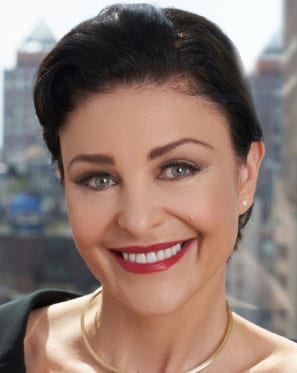
[Editor’s Note: As part of a series of interviews with senior communicators in the April edition of PRNEWS, Aflac’s SVP, chief ESG and CCO Catherine Hernandez-Blades discusses lessons she and her team learned during the coronavirus period. This story is part of a collaborative series between PRNEWS and The Institute for Public Relations.]
There are few businesses that the COVID-19 pandemic has not touched. At Aflac, business imperatives are to protect our people, secure continuity for the benefit of our policyholders and continue to drive the capital strategy, ensuring liquidity.
Start Strong, Start Smart

Aflac
We began by creating a map of all possible stakeholders, what they need to know and where they go for information.
Similar to many businesses, in two weeks, the company went from a single-digit percent of telecommuters to more than 90 percent remote workers.
While there are issues with this arrangement, it was necessary. The set-up allowed us in short order to ensure business continuity, which is allowing us to deliver on our promises to customers.
In addition, shareholders need to have confidence in the actuarial science that by definition prices risk. We are modeling based on the most recent pandemic—in this case, the Spanish Flu, which began in 1918 and lasted into the early 1920s.
Aflac must provide frequent, updated information to stakeholders, including: the board of directors, analysts, government officials, sales leadership, the general public, a field force of independent sales contractors, employees, supply chain partners, media, brokers, customers and more than 50 different regulatory bodies.
During the first three weeks of the pandemic, about one-third of Aflac’s corporate communications team drafted and distributed more than 150 pieces of communications.
Streamline Updates
Obviously, that’s a lot of messaging. On the other hand, we are trying to communicate only when necessary. One tactic we’ve been using is to condition audiences to head to a single place for updates. That way, you can make changes in real time, rather than constantly distributing updates en masse.
This pandemic is a fluid situation, which is why solutions to communicate in real-time are best.
From 50,000 Feet to 5,000
On a typical day, a communications executive spends most of her time at the 50,000-foot level. She uses all of her business acumen to develop and drive company strategy, not just communications strategy, while ensuring her team executes on it flawlessly.
During a crisis, leaders must quickly parachute to the 5,000-foot level, roll up their sleeves and bang out reams of copy. We were all drafting, approving and publishing, including me.
That brings to mind another important lesson: lean on your team! During a crisis, there’s still a component of business as usual. It’s important to make sure you have business continuity issues covered.
For example, Aflac completed a large acquisition in the midst of this pandemic. Certainly there were allowances for the pandemic and our response to it; still, some part of the business continues.
Courage is Critical
In spite of this dark moment, the world is changing for the better. For example, PRNEWS is compiling a running list of brands, organizations and people doing good during the pandemic.
It includes examples such as CVS Health providing free prescription drug delivery and Aflac’s own CEO, Dan Amos, donating $1 million for a challenge grant at a Georgia hospital.
It is crucial for everyone to look out for one another during this time. Which leads to the most important lesson: stay safe, take care of yourselves and each other!
Catherine Hernandez-Blades is SVP, Chief ESG and CCO of Aflac
Note: A version of this content appeared in the April 2020 edition of PRNEWS. For subscription information, please visit: http://www.prnewsonline.com/about/info
